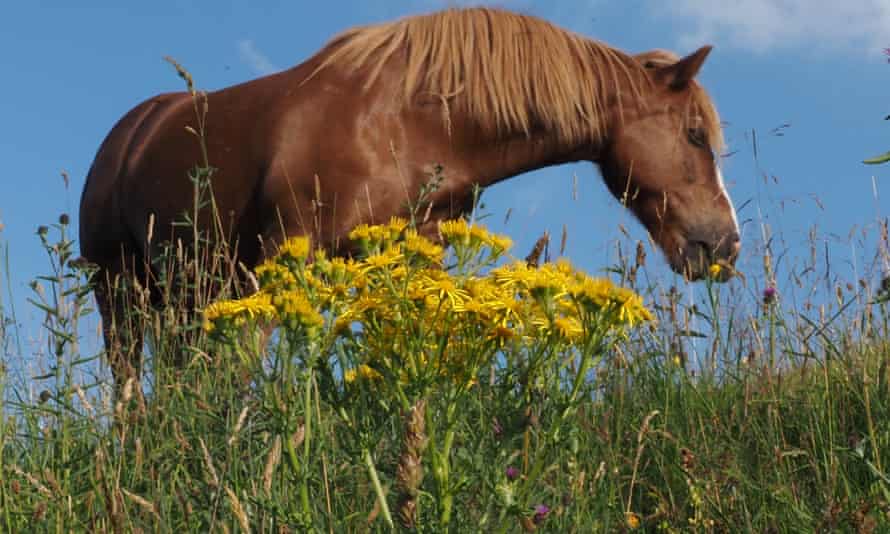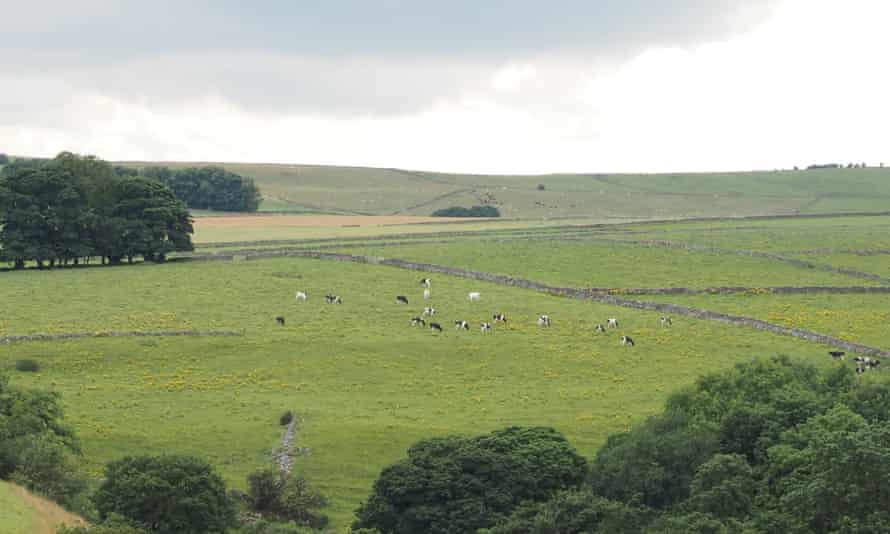Country diary: some wildflowers are more valuable than others
Sunart farm, Derbyshire: Not all farms make good decisions about which flora to prize, but this one does

Last modified on Tue 17 Aug 2021 08.16 EDT
Anyone driving into Chesterfield last month could well have seen a spectacular display of wildflowers in the margins to several cereal fields near the road. Running like an embroidered hem around the green quilt was a border of cerise, lilac, lavender, purple, gold and almost vulgar lipstick pink and scarlet. The driver’s eye would be bombarded with sensation. How wonderful, you might have reflected as you passed, that the farmer was making such a bold statement about their efforts for nature.
Unfortunately this kaleidoscope suggested a gap between appearance and reality that required closer investigation. The margin was probably a government-subsidised environmental measure, but its colours were supplied not only by non-native flowers – primarily from California and the Mediterranean – but also by horticultural varieties of plants specifically developed for show. In short, the benefits in the measures to the local flora were about nil and their service to local insect populations was far less than it should have been. It also begs a secondary question about why these efforts had been mounted in the first place. Were we being deliberately deceived?

By contrast, the owners of the ecologically centred Sunart farm, near Whaley Bridge, recently practised a reverse legerdemain when they entered a Royal Horticultural Society show at Tatton. They displayed a border called “Weedthriller”, comprised entirely of native plants gathered off their land. Not all the Sunart choices were as visually understated as the broad-leaved docks that are common locally. But, like the docks – which support a specialised suite of indigenous beetles, spiders, molluscs, wasps, bugs, moths and butterflies – the other components of Weedthriller were as valuable to biodiversity as they were unexpectedly pleasing to the eye. Proof of these underrated aesthetics was the fact that Sunart scooped first prize for their work.
Pride of place in their display of good old Derbyshire “weeds” was ragwort. The toxicity of the plant is much trumpeted and often exaggerated, but I have since noted numerous places where horses and cattle graze happily in fields liberally sprinkled with ragwort. More difficult to overstate is ragwort’s enormous contribution in nectar and pollen to hundreds of species of insect, and therefore to local birds and mammals and the entire wider ecosystem.